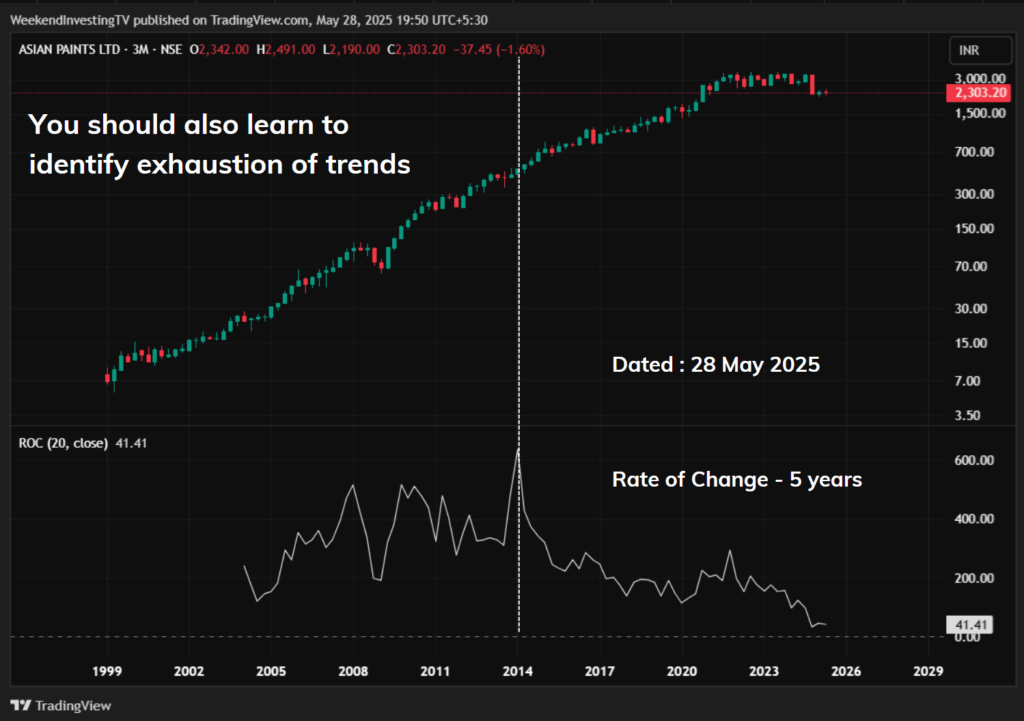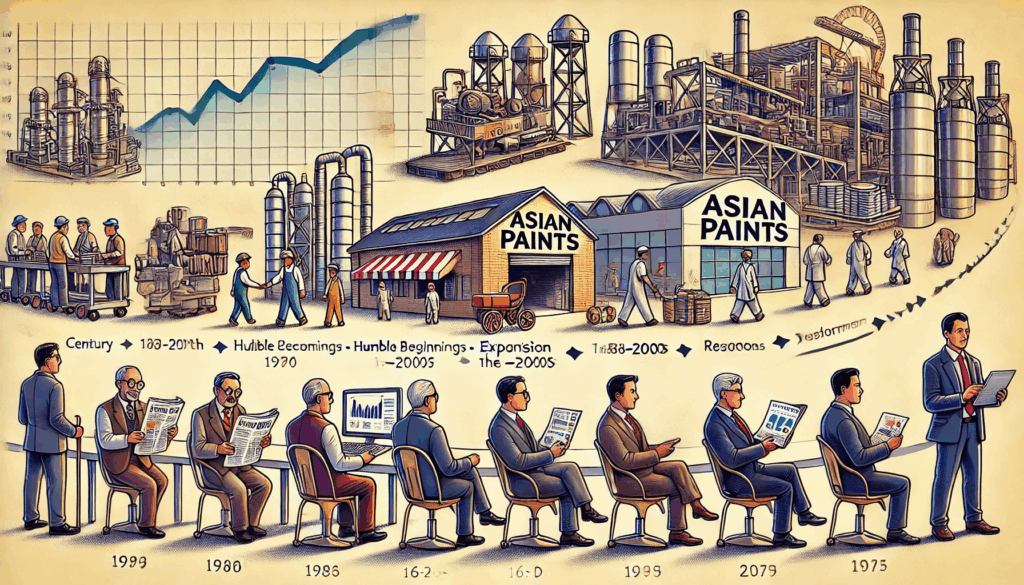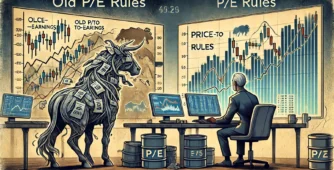The Phenomenal Rise of Asian Paints
Asian Paints has long been recognized as one of India’s most successful multibagger stocks.

Starting at just ₹7 in 1999 (adjusted for bonuses and splits), the stock soared to ₹3,200 in recent years before correcting to around ₹2,300. This remarkable trajectory is not solely about price; it also involves understanding the rate of change over time.
Understanding the Five-Year Rate of Change
A insightful way to analyze long-term stock performance is by examining the rate of change over a rolling five-year period (see the image). In the case of Asian Paints, certain five-year spans experienced returns of 150% to even 400–500%. For instance, a fivefold increase in five years is an extraordinary indicator of trend momentum. However, such high rates of return were not consistent. During the 2008 global financial crisis, the rate of change dipped sharply. Post-2014, this metric began to gradually decline, eventually plateauing near the 200% mark, and then weakening further.
Recognizing Maturity and Trend Exhaustion
This decline in the five-year rate of change highlights a broader market insight: trends mature. Just as trees do not grow indefinitely, stocks also reach a point of saturation. Very few companies can sustain massive upward trends for more than 20–30 years without facing significant challenges—be it from emerging technologies, more agile competitors, or internal inefficiencies. As companies grow larger, they may lose the flexibility and innovation that once drove their meteoric rise. This natural cycle of growth, maturity, and eventual plateau is akin to the human lifecycle—full of energy early on, followed by stabilization and eventual limitations.
Building a Dynamic Portfolio Strategy
Investors can draw valuable lessons from this trajectory. It is essential to develop the skill to identify when old trends are exhausting and when new ones are emerging. This doesn’t mean a full exit or entry all at once, but rather a gradual rotation in the portfolio based on evolving market dynamics. By monitoring metrics like the five-year rate of change (or similar indicators with shorter timeframes for quicker decision-making), investors can make more informed decisions regarding entry and exit points.
What’s your approach to spotting trend exhaustion in long-term investments? Share your thoughts in the comments below! Thank you for reading, and if you found this blog helpful, please SHARE it with your friends!
WeekendInvesting launches – The Momentum Podcast
Join us on The MOMENTUM PODCAST as we sit down with Venkatesh, a dynamic product manager and MBA graduate from Hyderabad. Discover his incredible journey from starting investing during the 2020 COVID crash to achieving a remarkable 5X salary jump!
In this insightful conversation, Venkatesh shares:
✅ His early investing blunders and crucial lessons learned.
✅ How he built a disciplined investing routine with Nifty index funds and direct stocks like Tata Elxsi.
✅ The surprising benefits of his IT domain knowledge in stock picking.
✅ His long-term vision for financial independence and strategic wealth building.
✅ Why he prioritizes investments and EMIs (including his home loan!) before anything else.
If you’re a young professional looking to kickstart your investment journey or seeking inspiration for disciplined wealth creation, this episode is a must-watch!










